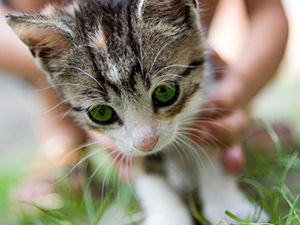If you’ve ever scratched your cat in just the right spot and seen them twitch, purr, or kick their hind leg, you might wonder — can cats be ticklish?
While cats don’t laugh or squirm the way humans do when tickled, they do have areas of heightened sensitivity. Understanding where your cat likes or dislikes being touched can help you strengthen your bond, avoid overstimulation, and keep them feeling secure.
Let’s explore what feline sensitivity looks like, how cats respond to “ticklish” sensations, and how to respect your cat’s personal preferences.
Do Cats Have Ticklish Spots?
Cats have nerve-rich areas on their bodies, just like humans and dogs. While ticklishness in humans is typically linked to laughter, in cats, it’s more about nerve response and stimulus sensitivity. Many cat owners report that their cats react strongly — sometimes positively, sometimes not — when petted or scratched in certain spots.
Common ticklish or sensitive areas in cats include:
The base of the tail
Behind the ears
Under the chin
Is Being “Ticklish” Enjoyable for Cats?
That depends on the individual cat. For some, certain touches can be pleasurable — triggering purring, kneading, or even leaning in for more. For others, the same touch may be overstimulating or feel irritating, especially if they’re anxious or in a hyper-alert mood.
Cats can become overstimulated very quickly. What starts as enjoyable can escalate if the petting continues too long or becomes too intense. Signs of overstimulation include:
Flicking tail
Flattened ears
Skin rippling along the back
Why Do Cats React to Touch Differently?
A cat’s individual personality, early socialization, past experiences, and even breed can influence how they respond to touch. For instance, Ragdolls and Maine Coons are often more tolerant of petting, while some shorthaired breeds may be more sensitive.
Kittens who were handled gently and frequently during their first weeks of life are more likely to enjoy physical affection. In contrast, cats with negative experiences or limited human contact may perceive touching as a threat.
Final Thoughts
So, can cats be ticklish? In a way — yes. While their reactions don’t mirror human laughter, cats do have nerve-sensitive areas that trigger instinctive responses. Learning where and how your cat likes to be touched not only avoids conflict but deepens your connection.
Respect your cat’s boundaries, read their body language, and you’ll be well on your way to becoming their favorite human.
Learn More
Explore more about feline behavior at petniq.com to better understand your cat’s needs and preferences.
